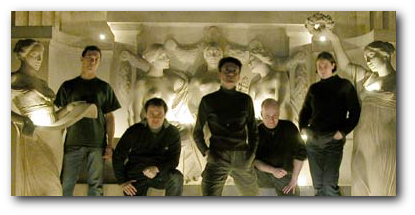It’s been a year since I started this blog. Maybe it’s time to answer the question “What is User Experience”, and finally explain what the UX in the Blog’s title refers to.

It doesn't mean these guys
User Experience
User experience is a difficult subject to define, particularly in the field of video games and contains many competing elements. At its simplest, user experience is “how does a system (or game) make the user feel?”
As a design philosophy it includes integrating user insight into all stages of a design process (UCD), measuring the user’s experience (what the feel about it), and then using this insight to inform the development. This makes it more than just a ‘step’ in the design process, and instead it becomes an overarching philosophy informing development. Of course, it’s difficult to understand what a user is feeling – although there are many common methods, such as ‘think-aloud’, biometrics or interviews, no method is perfect, and each has its own idiosyncrasies.
User experience is not usability
User experience is more than just usability, although their can often be a direct link between the two.
Usability focuses on the ‘ease of use’, ensuring that the task at hand can be understood, and that a system allows people to achieve their goals. This encompasses factors such as visibility, response times, and learn-ability.
Usability and User Experience link when usability affects how a user feels about the product, whether this is through an easy working process making the user smile, or (and much more likely), a poor workflow making them angry. Consider how annoyed people get when their computer isn’t responsive, or a button causes the wrong action to be performed. Poor usability can therefore influence the user experience of a product or system.

and thats how you get angry birds
User experience and games.
Within games, user experience becomes a more complicated field. In traditional software development, the goals of the user are clear, typically “perform a task quickly and easily”, and emotion should not play a major part in the interaction (beyond ‘don’t annoy the user’). In games, the goal is not so simple, as neither speed nor ease are the primary objectives.
Instead user experience becomes about defining the emotions or feelings your game should create, and ensuring that the game makes this happen. For example, chart favourite Just Dance will have some key emotions and responses it wants to create in its players, such as ‘group enjoyment’, ‘laughter’ and ‘make the players actually get off the sofa’, and so will have been designed to elicit these responses.
Some elements are not unique to each game, for example its common that game’s don’t want to cause unnecessary frustration, however it is important when designing games to declare measurable goals for the user experience, and regularly ensure that these are being met.
User Experience in games is an emerging field, with lots of academic interest in its progress. It will be interesting to see what the future holds, as techniques such as biometrics and the application of user experience methodologies from other fields increase our understanding, and ability to measure, people’s feelings around games.
Leave a Reply